C/2020 F3 (Comet NEOWISE), 13th July 2020
The photos shown on this page are of C/2020 F3 (Comet NEOWISE) and were taken with a bridge digital camera in the early hours of 13th July 2020. Comet NEOWISE was discovered only late last March (on the 27th, 2020) by the NEOWISE space telescope, for which it is colloquially named.
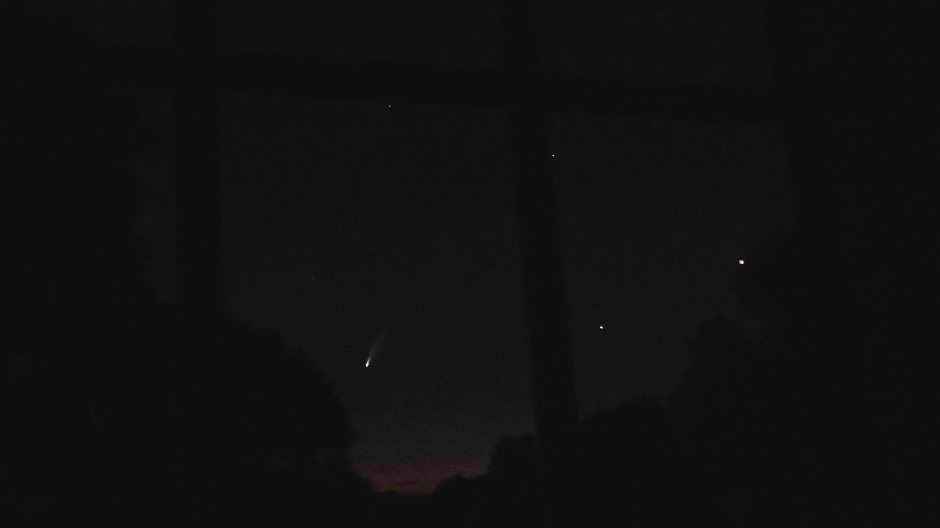
Comets, often described as “dirty snowballs,” are made up of rock, dust, gases, and ice. They orbit the Sun and there are billions of them in the Solar System. However, most of them never pass close to the Earth. Perhaps the most well-known is Halley’s Comet, which can be seen in our skies every 76 years.
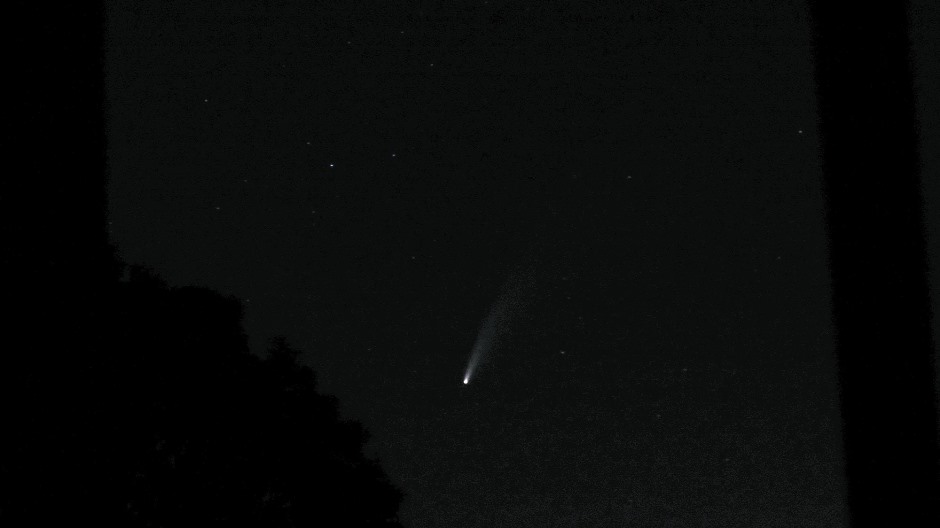
On clear nights, comet NEOWISE appeared low in the morning sky (in the UK) just above the north / north-eastern horizon and remained visible to the naked eye throughout most of the month, with its closest approach to Earth (64 million miles) occurring on Thursday 23rd July; still 268 times further away from us than the Moon is.
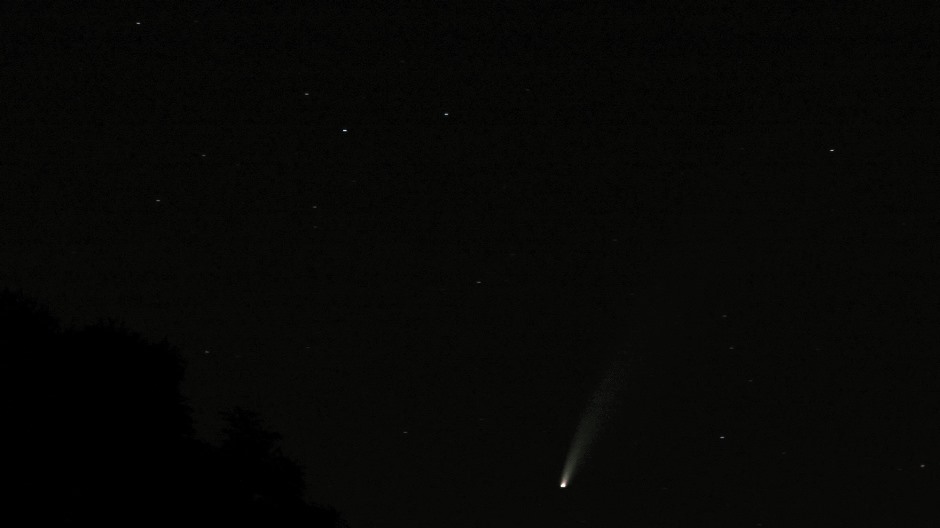
Whilst planets orbit the Sun in a roughly circular fashion, a comet’s orbit is shaped like a long oval; most of them travel very far into the outer Solar System. They can take anything from several years to many thousands of years to complete one orbit. Although not the case with comet NEOWISE, planet Earth may occasionally pass through the orbits of some comets. Pieces of dust left in their trails sometimes crash into our atmosphere, burning up, resulting in a meteor shower.
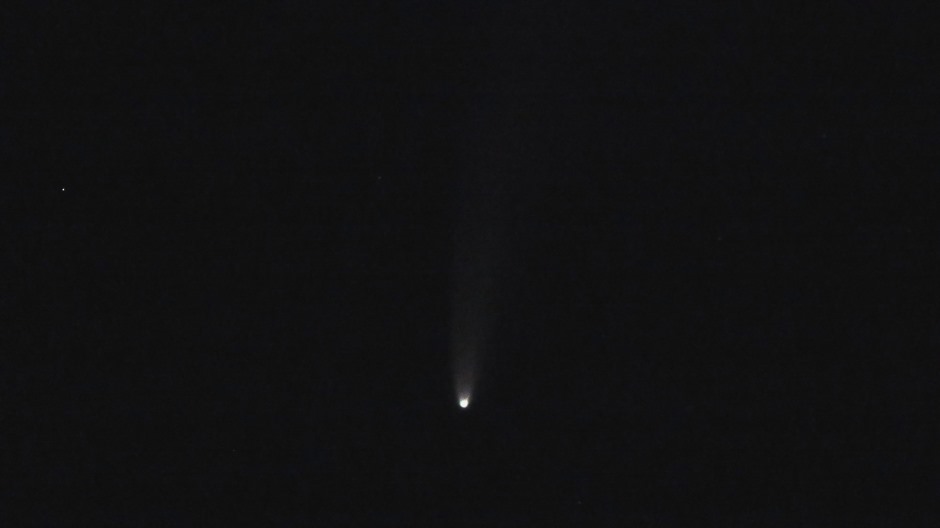
Comet NEOWISE took approximately 4,500 years for its last orbit around the Sun, travelling out to the far reaches of the Solar System. Put another way, it was last in our “neighbourhood” about the time all three Pyramids of Giza in Egypt would have just been completed. So, a unique opportunity to photograph this newly-discovered celestial object.
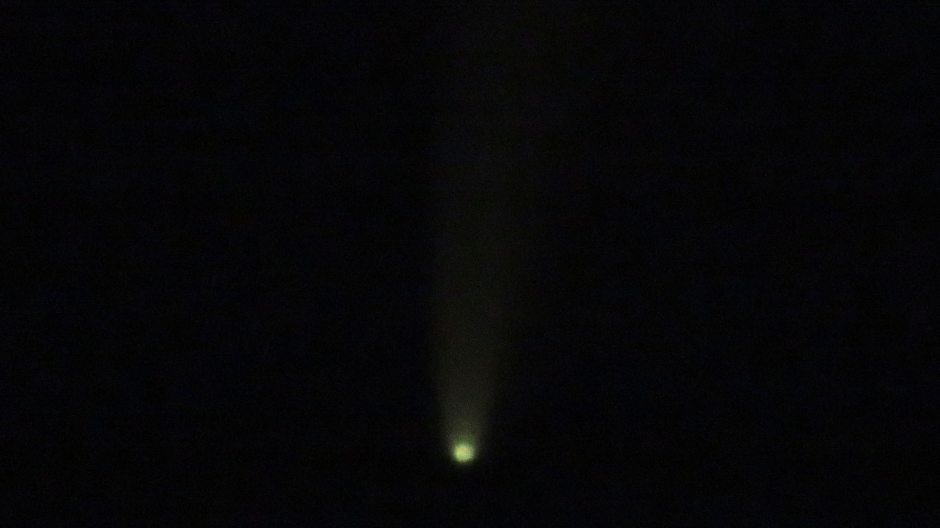
As comets come close to the Sun and heat up, material becomes detached and a long tail of gas and dust forms. Some comets fall apart completely, although Comet NEOWISE survived its nearest encounter with the Sun on July 3rd 2020 and is now heading off for its next orbit, which is calculated to be slower; it should return to our neighbourhood again in some 6,766 years’ time.
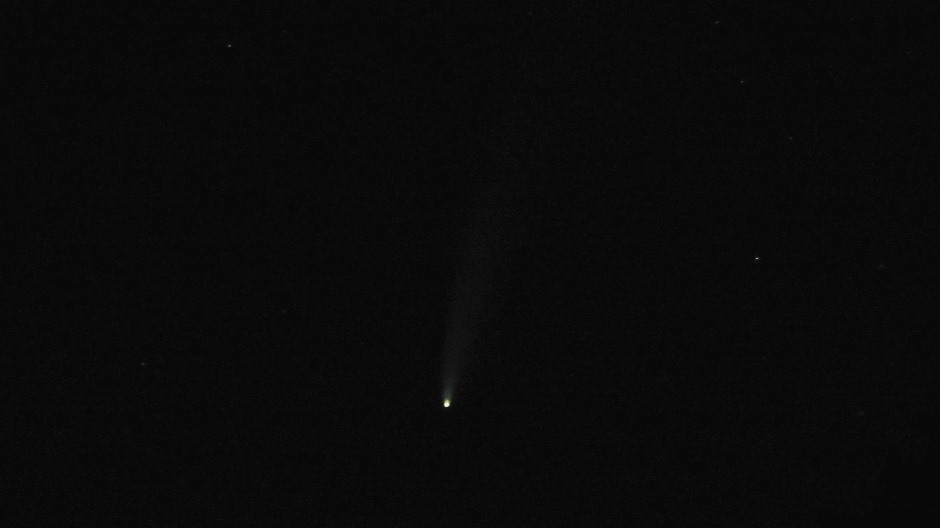
Reference and Further Information
1. Wikipedia article Here
Back to Top